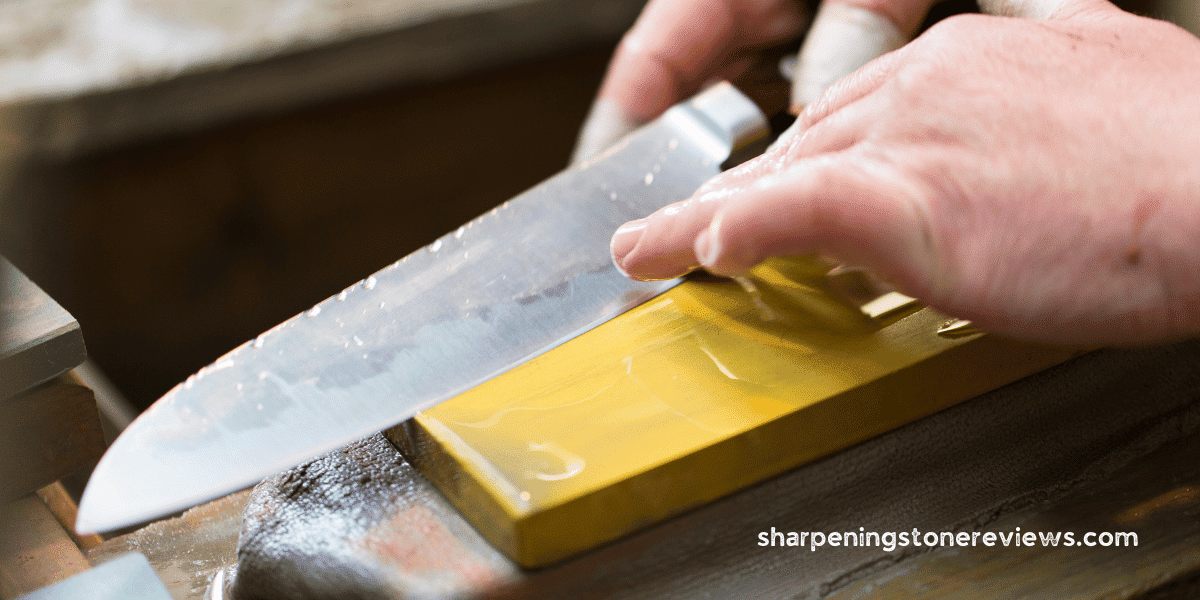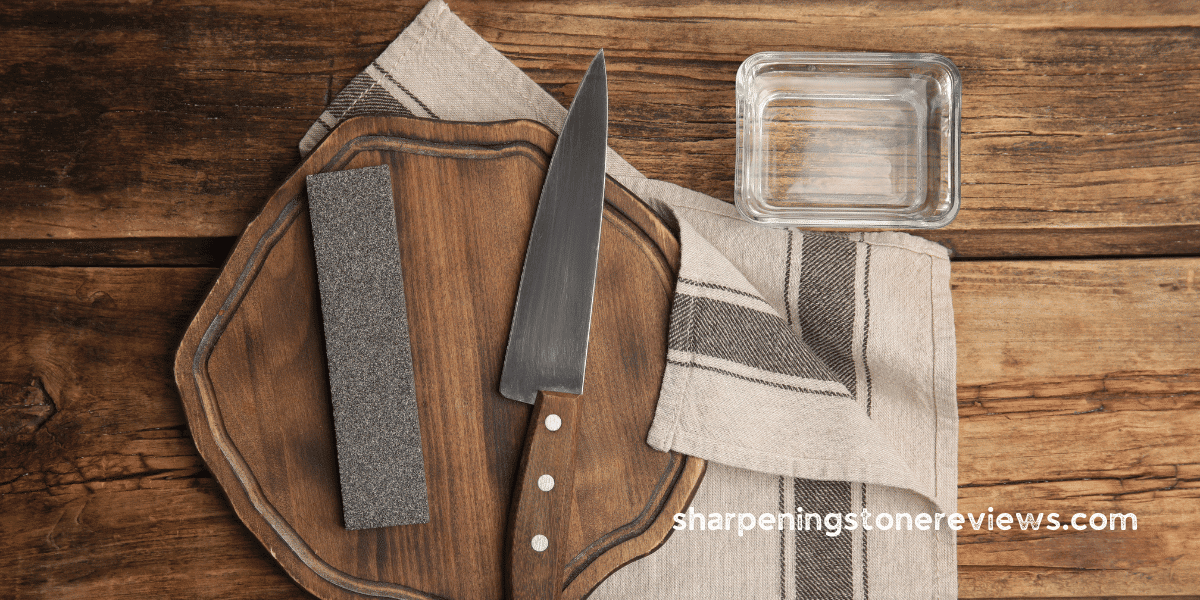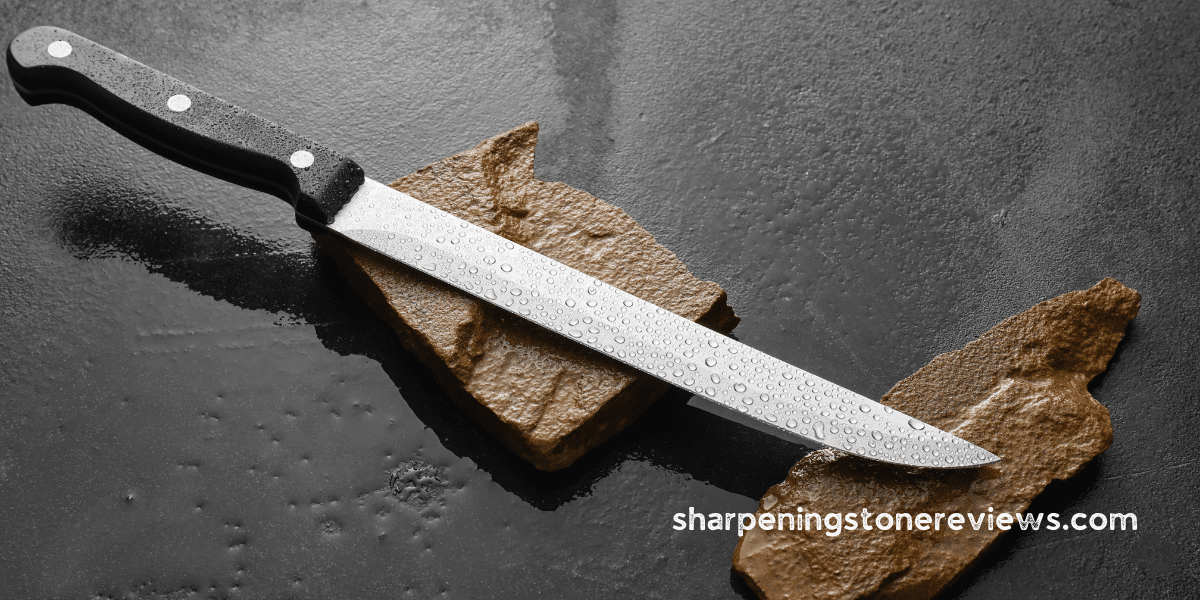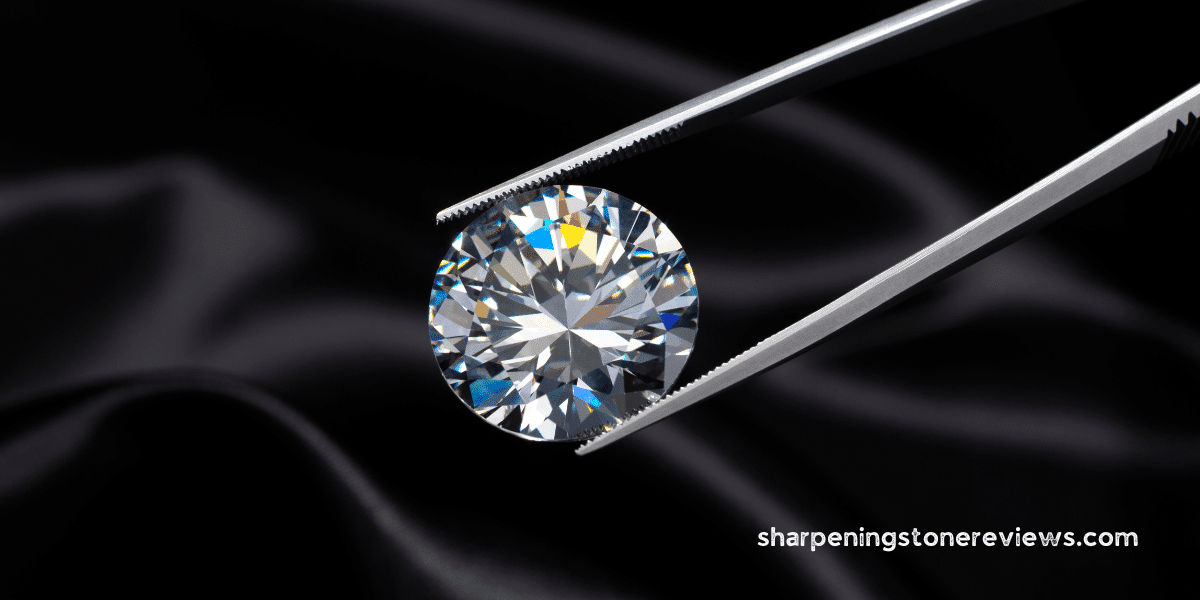Are you having difficulty sharpening your knives or blades? Using a flattening stone is a great way to improve their sharpness, but it can be intimidating if you’ve never done it before. Don’t worry – with a few easy tips, and you can sharpen blades like a pro.
This article discusses the different types of flattening stones, how to prepare them, and the importance of pressure, lubrication, and testing.
We’ll also talk about how to care for your flattening stone so it lasts for years.
Now, let’s get started!
Types of Flattening Stones
When flattening waterstones, selecting the suitable stone is important to get the job done. There are a few different types to choose from:
- DMT Dia-Flat Lapping Plate: This coarse diamond plate utilizes steel to create a flat surface for Waterstones.
- DMT Dia-Flat 95 Lapping Plate: This version is finer and more suitable for finer waterstones.
- Double-Time Flattening Stone: This stone is ideal for those looking for a fast and effective flattening stone.
These stones are designed to create a flat surface for Waterstones, which is necessary for straight-cutting edges.
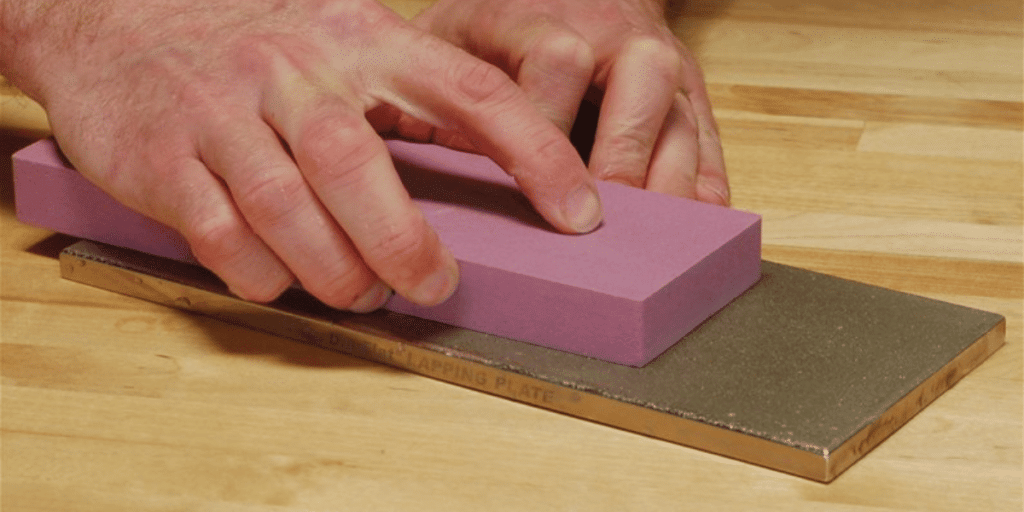
Preparing the Stone for Sharpening
Before you start sharpening, it’s essential to prep the stone for the task – giving it a ‘flattening facelift’ of sorts!
A lapping plate is essential for this process, and you need to choose the right one. The DMT Dia-Flat Lapping Plate is a great option, but the DMT Dia-Flat 95 Lapping Plate is even finer. You can also use the Double-Time Flattening Stone.
Once you have the plate, you’ll want to wet the stone and rub it over it. Use plenty of water and a circular motion to ensure the entire surface of the stone is flattened. Sandpaper can also be used to smooth out the edges.
Once the stone is flat, use a straight edge to check if the pencil marks have worn away. If so, then the stone is ready for sharpening.
Applying the Right Amount of Pressure
Applying too much pressure while lapping your stone can ruin it, so you must ensure you use the perfect amount! When flattening a stone, applying the right amount of pressure to the surface is essential. The process of flattening is delicate and requires patience. Here are a few tips to keep in mind:
- Use gentle pressure when lapping the stone – don’t press too hard.
- Make sure the stone is correctly lubricated with water to prevent damage.
- Monitor the progress of the flattening process to ensure success.
If you apply too much pressure, it can cause scratches or damage to the stone. Too little pressure can slow down the flattening process. Finding the right balance is essential to ensure your stone is properly flattened.
The flattening process can be lengthy, but getting the perfect results is essential.
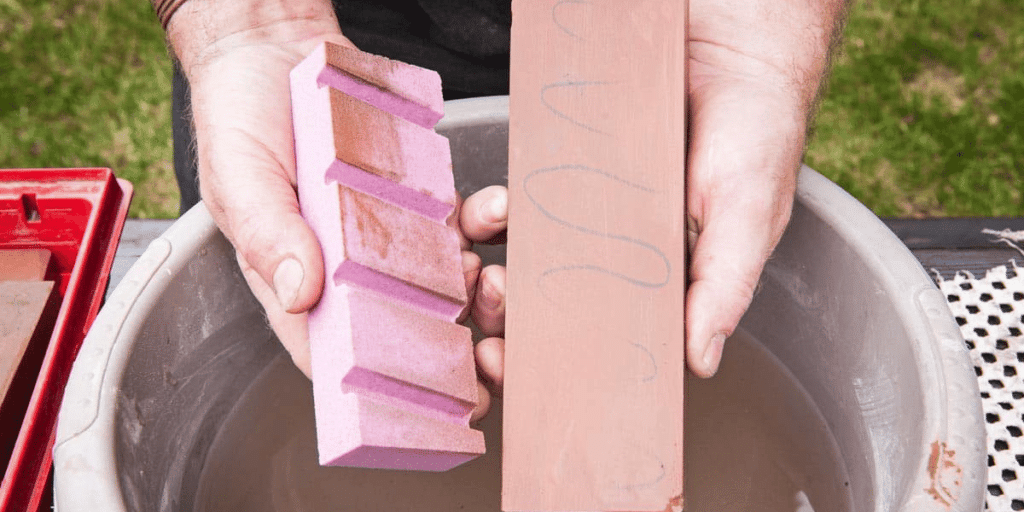
Lubricating the Stone
Lubricating your stone is critical to achieving a successful flattening process, so be sure to keep it well-watered – like a delicate flower – for best results.
A Sharpening Stone should be lubricated with water whenever you are flattening it. This helps the stone flattening method by reducing friction between the Sharpening Stone and the lapping plate.
You should use a generous amount of water and make sure the stone is thoroughly wet all the way through. Rubbing the stone over the lapping plate should be done in a circular motion, and the water should be continually added to reduce heat and keep the stone lubricated. This will prevent the stone from becoming damaged or overheated.
It is important to remember that water stones need lots of water to stay lubricated and keep them from becoming damaged. The more water you use, the better the results you will get from your stone flattening.
Working the Blade Over the Stone
Once you’ve correctly lubricated your stone, it’s time to start working your blade over it to get a sharp edge. The sharpening process requires a specific motion depending on the type of stone you’re using. Here’s a list of tips to keep in mind when doing this:
- Ensure you’re using a flat stone so your blade won’t wear.
- To cover the whole surface of the stone
- , use a circular motion. Move the knife from one side to the other.
- Re-lubricate your stone regularly.
Remember to keep the motion consistent and to use plenty of lubrication when sharpening. This will help protect your blade and stone from wear and tear. As you become more experienced, you can adjust the motion and pressure as needed.
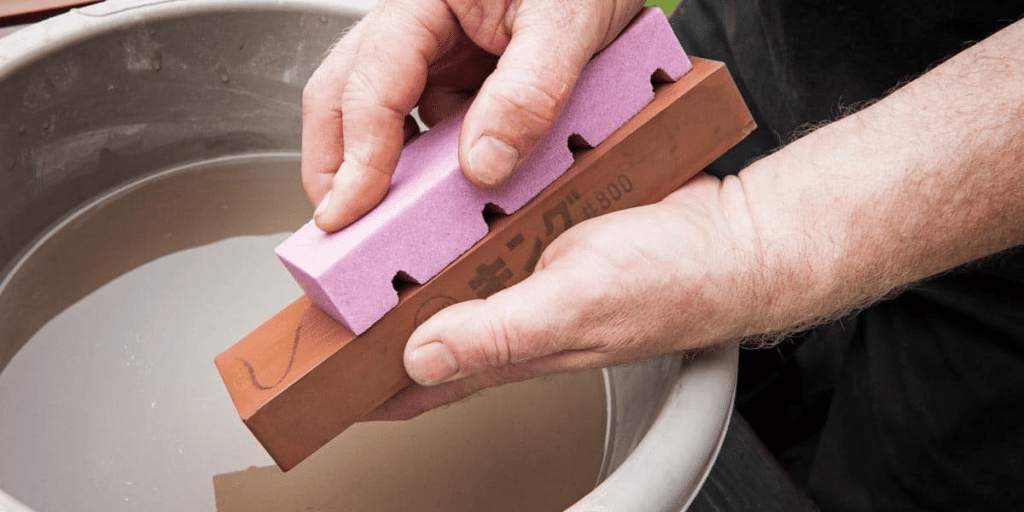
Testing the Sharpness of the Blade
Testing the sharpness of your blade is the final step in the sharpening process – and it’s essential for getting a smooth, clean edge.
To do this, you’ll need a sharpening tool, like a stone flat. Once you’ve flattened the stone, you’ll want to make sure to draw lines on the stone. This will help you track your progress during your sharpening session.
Once you’re finished, you can use the lines to test the sharpness of the blade. Take the plane blades and run them along the lines. If the blade easily cuts through the lines, you know you’ve achieved a sharp edge. If not, you’ll need to go back and rework the blade over the stone.
It’s important to keep track of your progress to achieve successful sharpening.
Caring for Your Flattening Stone
Caring for your flattening stone is essential after testing your blade’s sharpness. Flattening stones, typically made of silicon carbide, can be easily damaged. Rub your flattening stone with sandpaper or plate glass to care for it. This will remove any particles stuck to it during the sharpening process. Use short strokes and avoid pressing too hard to prevent damage and maintain effectiveness. After sanding, wipe off any remaining debris with a damp cloth. Regularly performing these steps will keep your stone in good condition and ready for use.
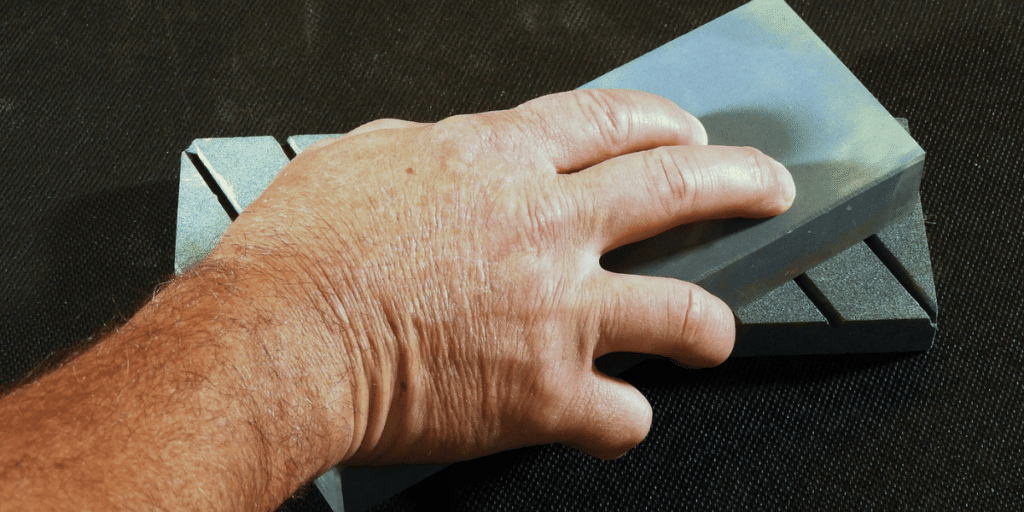
Frequently Asked Questions
What is the difference between a flattening stone and a sharpening stone?
A flattening stone is used to make a water stone flat and even, while a sharpening stone is used to hone and sharpen blades. Flattening stones are coarse and abrasive while sharpening stones are fine and create a smooth edge.
How often should the flattening stone be used?
Flattening stones should be used regularly – at least once a month – to ensure a quality sharpening experience. Consider it similar to a tune-up for your vehicle – consistent maintenance guarantees smooth operation and avoids any significant issues in the future.
What type of lubricant should be used on the stone?
When using a flattening stone, lubricant should be used. Water is generally the best choice, as it helps remove abrasive material from the stone’s surface. Tap water is ideal, but wet stones can also work.
How can I tell if the blade is sharp enough?
You can figure out the sharpness of your blade by running your finger across the edge of the blade. If it’s sharp enough, you’ll feel a slight tug. If not, you’ll need to sharpen it more. Don’t worry; it’s easier than it sounds!
What should I do if my flattening stone is damaged?
If your flattening stone is damaged, replace it. Damaged stones won’t give you the results you need and can even cause damage to blades. Don’t risk it- get a new one!
